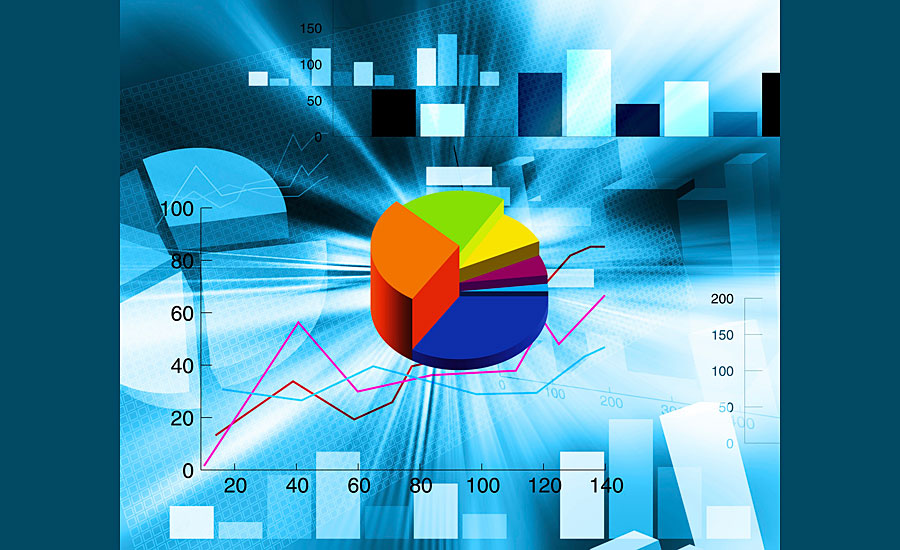Report Predicts Aerospace Coatings Market to Exceed $1 Billion by 2024

OCEAN VIEW, DE — According to a new study published by Global Market Insights Inc., the aerospace coatings market is estimated to surpass $1 billion by 2024.
The report predicts that the global aerospace coatings market size will reach16 kilotons by 2024. The use of these coatings in various aircrafts in military, space and commercial uses will primarily drive the industry over the forecast timeframe. Increasing air passenger traffic across the globe has led to increased deliveries of aircrafts, further influencing industry demand.
Growth in international trade has resulted in the development of commercial aircraft, propelling industry size. Various government bodies across the globe are investing significantly in the aerospace sector, contributing to revenue generation. For instance, in 2014, China invested over $3 billion in the aviation industry to cater to the rising demand of air traffic. Investments such as this will increase demand in the future. However, the introduction of substitutes, such as composite fuselage designs, may pose a challenge to the aerospace coatings market over the forecast timeline.
Aircraft producers are focusing on using high-quality paints and coatings in their manufacturing processes. The business is witnessing innovations to reduce the overall manufacturing cost and enhance product efficiency. The use of nano coatings has gained prominence in the industry in the last decade, owing to benefits such as resistance to dirt and retention of shiny colors for longer duration.
According to the study, polyurethane resins will account for over 55% of revenue share in the aerospace coatings market over the forecast timeframe. The preference for this resin can be attributed to advantages such as high resistance to UV rays and other damages, including staining, chemicals, and abrasion. Extensive use of these resins in new-generation aircrafts such as the Boeing 787 will further support the segment’s dominance.
Epoxy resins are anticipated to generate a demand of approximately 8 kilotons by 2024. The high use of these resins in traditional aircrafts has resulted in high demand from maintenance, repair, and overhaul, fostering industry growth. Additionally, consumer preference can be attributed to the cost effectiveness of these resins compared to their counterparts.
Solvent-based coatings will account for over 60% of the market share to 2024. These coatings are less prone to environmental damages due to humidity and temperature. The technology leads to considerable reduction in drying time, which in turn will drive the aerospace coatings market share over the forecast timeline. Water-based coatings will exhibit a compound annual growth rate (CAGR) of over 6% from 2017 to 2024, owing to high usage in aircrafts. Environmental and regulatory compliance is another factor significantly contributing to segment demand.
Original equipment manufacturer (OEM) use is expected to register over $580 million by 2024. High usage of coatings in aircraft manufacturing will primarily increase revenue generation. The rising number of aircraft delivery orders has led to increased production of aircrafts, further strengthening the product penetration.
Commercial aircrafts are expected to dominate the industry with almost 35% of market share by 2024. This can be credited to rising innovations in coatings such as chrome-free technology. The new technologies feature advanced capabilities that offer cost saving. Enhanced coating products lower overall fuel costs by $700 annually. Rising air passenger traffic, along with increasing airline mergers across the globe, will further propel industry growth.
Exterior aerospace coatings will account for over $890 million by 2024. These coatings provide protection to the aircraft exteriors against cracking, erosion and deterioration. The use of interior aerospace coatings will grow at a CAGR of approximately 7%, owing to the increasing use of coatings for functional and decorative purposes. They are used for painting and upgrading the cabin interiors.
North America is expected to reach $350 million during the forecast period. The presence of many established manufacturers and introduction of new-generation aircrafts, including the Boeing 787, Boeing 737 MAX, and Airbus A350, are primary influencing product penetration across the region.
The Asia-Pacific aerospace coatings market size is anticipated to exhibit over 7% CAGR from 2017 to 2024. This can be attributed to rising cargo and passenger traffic along with increasing international trade in emerging economies, including India and China. Improving aviation infrastructure in the region will further support the region’s growth.
For more information about the report, Aerospace Coatings Market Size By Resin (Polyurethane, Epoxy), By Technology (Solvent-Based Coatings, Water-Based Coatings, Powder Coatings), By User (OEM, MRO), By Aircraft (Commercial Aircraft, Military aircraft, Helicopters, Spacecraft), By Application (Exterior, Interior), Industry Analysis Report, Regional Outlook (U.S., Canada, Germany, France, UK, Italy, Russia, Poland, Netherlands, China, Japan, India, South Korea, Singapore, Australia, Thailand, Malaysia, Taiwan, Brazil, Mexico, Argentina, Peru, Chile, Colombia, Venezuela, Saudi Arabia, Israel, Egypt, Turkey, Iran, Algeria, UAE, Syria, South Africa), Application Development, Competitive Landscape & Forecast, 2017–2024” visit
https://www.gminsights.com/industry-analysis/aerospace-coatings-market.
Looking for a reprint of this article?
From high-res PDFs to custom plaques, order your copy today!





